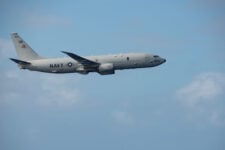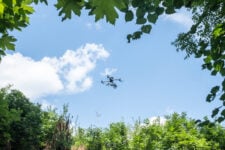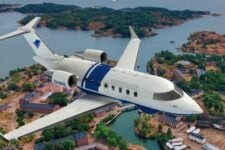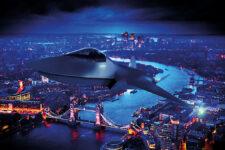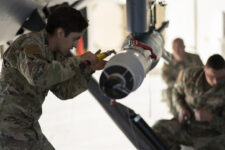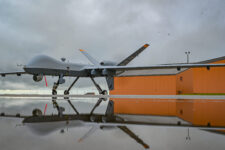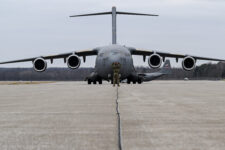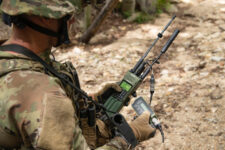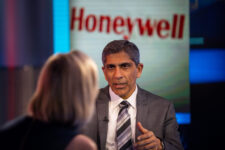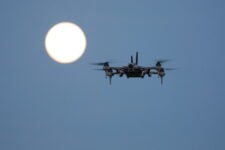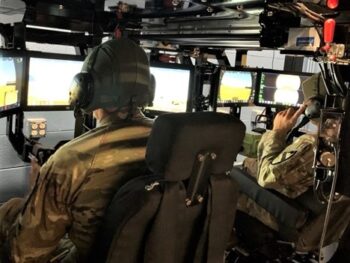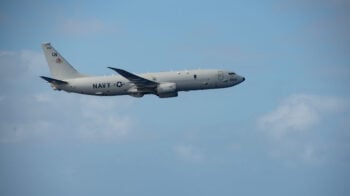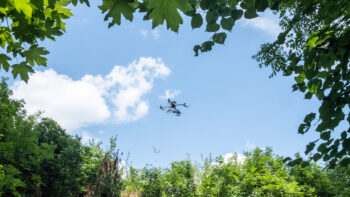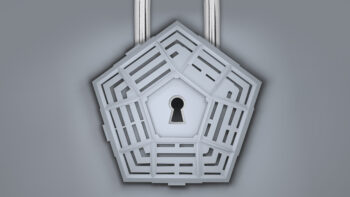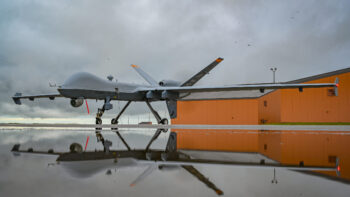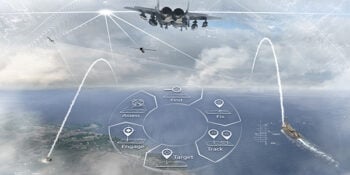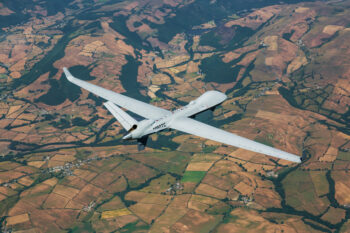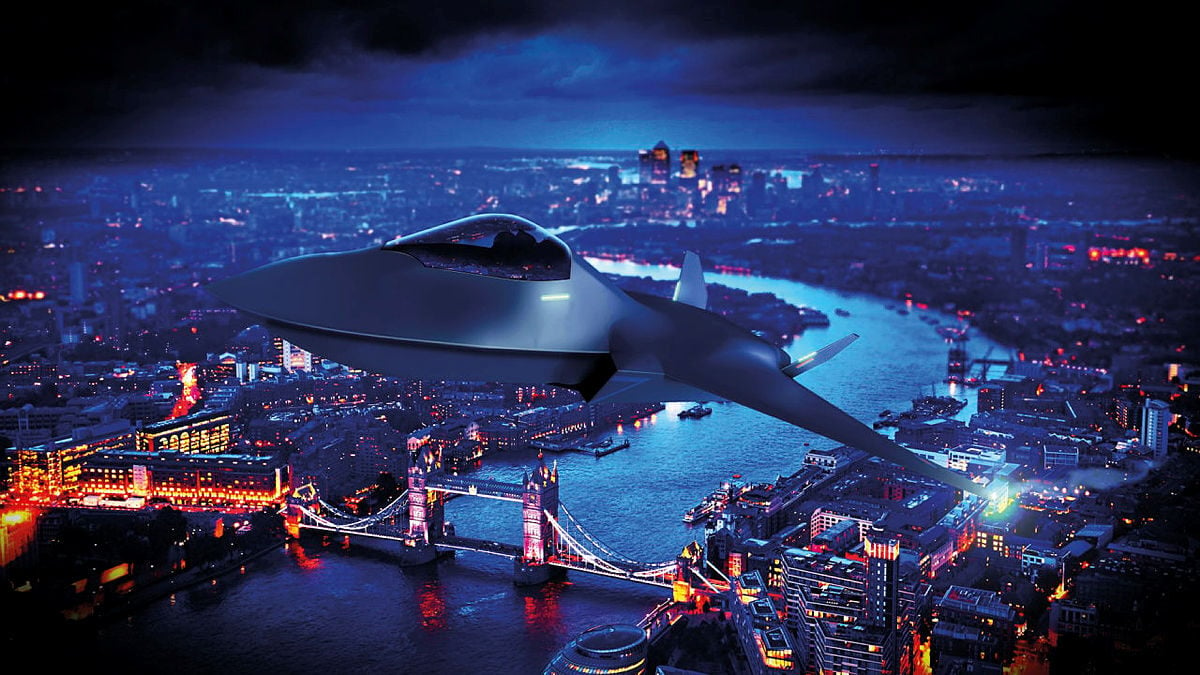
A mock up Image of the proposed Team Tempest Future Combat Air System concept. (UK MoD)
BELFAST — The Air Force’s decision to reevaluate its Next Generation Air Dominance (NGAD) program is unlikely to unsettle the trilateral Global Combat Air Programme (GCAP) due to different costs and national priorities, analysts tell Breaking Defense.
In a surprise move earlier this month, Air Force Chief of Staff Gen. David Allvin, failed to confirm if or when the service will choose a winner for the NGAD competition, acknowledging that “choices” will have to be made “across the landscape,” amid funding constraints, as well as recognition that a “different way of developing capabilities” has emerged from the service’s Collaborative Combat Aircraft (CCA) drone wingman effort.
Generally, the NATO nations follow America’s lead on major weapons developments, and if the US decided it doesn’t actually need a sixth-gen manned fighter, it would stand to reason that the European nations would look at that and consider whether they should proceed with their own efforts — the British-Italian-Japanese Global Combat Air Programme (GCAP) and the Franco-German-Spanish Future Combat Air System, or SCAF.
RELATED: FCAS? SCAF? Tempest? Explaining Europe’s sixth-generation fighter efforts
Specifically with GCAP, the first thing analysts point to is how the programs exist in different stratospheres financially.
The fact NGAD sits at “ a completely different price point” to GCAP means the budgetary impact is immediately different, said Douglas Barrie, senior fellow for military aerospace at the UK-based International Institute for Strategic Studies (IISS) think tank. “We are seeing estimates between $200-300 million per unit. The US is the only country in the world that could afford to do that.”
Outlay costs for NGAD and the financial management of the GCAP program in particular, clearly stand out as a key point of difference between the two, suggested Trevor Taylor, director of the defence, industries and society program at the Royal United Services Institute (RUSI), a British defense think tank.
“They [the UK MoD] are doing their very best to control the technical and financial risks in the [GCAP] program but also to give it a sense of urgency,” he explained. “That is in contrast to NGAD, because as soon as Frank Kendall [Secretary of the Air Force] said it was going to cost several hundred million dollars a copy….I had questions” around affordability.
The UK Conservative government has so far agreed to spend £2 billion ($2.5 billion) on GCAP out to 2025 and committed an additional £12 billion ($15.1 billion) overall, but it is expected to be ousted from office in next month’s general election by the rival Labour Party. Labour has so far not indicated which big ticket defense acquisitions will be protected or cancelled, but have pledged to issue a new Strategic Defense Review by July 2025.
RELATED: What could a new Labour government mean for UK defense?
Barrie also pointed to requirements, noting that GCAP will likely lead to the delivery of “very capable” aircraft, grounded by a “system of systems” approach, but “NGAD was going to be a step beyond” by focusing on a much more expensive, “exquisite” platform.
“All of the threat analysis that the US has put out there about the Indo-Pacific and the challenge from China [has led to a focus on] certain capabilities,” he said, especially because the F-35 and other in-service Air Force fighter jets “don’t have a particularly long-range or can’t carry a particularly heavy weapons load.”
Taylor nodded to requirements in a different way, saying that the inclusion of three partners — including Japan, which he said is “very keen” to get an F-2 replacement as quickly as possible — means changing requirements on the program would be incredibly difficult.
#DefenseofJapan Part IV-1
It’s essential to retain cutting-edge fighters to ensure air superiority into the future. Leaders of Japan, the UK and Italy announced the Global Combat Air Programme (GCAP), with 3 nations agreeing agreement to jointly develop next-gen fighter aircraft. pic.twitter.com/108zMeE6SV— Japan Ministry of Defense/Self-Defense Forces (@ModJapan_en) October 17, 2023
Such an assessment very much fits with public statements made by top military officials involved in GCAP.
While partners are still in the process of settling on a final fighter design, “perhaps because Italy operates both [Eurofighter] Typhoon and F-35 like us, and Japan operates F-35, there is quite a strong consensus about what those [design] requirements should be and where the trade space might be,” Air Chief Marshal Richard Knighton, Chief of the Air Staff at the UK’s Royal Air Force, told British lawmakers [PDF] in February.
Additionally, at the same UK Defence Committee hearing, Richard Berthon, director of future combat air at the UK MoD said, “The Japanese have not conducted a multilateral program of this nature before, but it is very clear that they are robustly focused on pace, and I think that has brought pace very much to the forefront of the program and makes it the top priority.”
Alongside Japan’s F-2 replacement requirement, GCAP fighters are also intended to succeed British and Italian Eurofighter Typhoon fourth-generation multirole jets, starting in 2035.
GCAP’s joint development phase is set to be formally launched next year and follows industry completing more than 12 months of initial design activities.
“It’s as solid a next generation program as you’re gonna get in terms of requirements,” said Richard Aboulafia, managing director of AeroDynamic Advisory, an aerospace consultancy firm. “The most interesting aspect is bringing three countries with very similar requirements and expectations and even capabilities, close together. The Anglo-Japanese connection alone, I think is fantastic [especially] in terms of what they want from a combat aircraft; [namely] intercept, time to climb and range.”
At a more general level, Taylor said that two concepts are driving GCAP forward: development of a “minimum viable product” covering the next generation fighter so it can deliver an operational capability to counter “the pacing threat,” and a push to ensure any final design is “relatively easily upgradeable.”
Aboulafia suggested that the decision by USAF to settle on a larger, more expensive, next generation platform could, in export terms, turn out to be highly beneficial for GCAP.
“The problem of course [for USAF] is if you do make this a much bigger plane, even more of a Pacific fighter, you’re obliterating any hope of an export margin,” he said. “In other words, I think this might be good for GCAP because you get countries like Australia or Saudi Arabia, high end fighter countries that say, ‘NGAD looks like a US only system, let’s look closely at GCAP.’”
Saudi Arabia has long signaled interest in joining GCAP, but no breakthrough has arrived, nor has a “definitive timetable” been agreed so Riyadh can be potentially added as a fourth nation.
P-8 LRASM testing expected to wrap this summer, Boeing official says
Boeing will also soon begin flight testing a multimission pod developed with internal funds, according to company official Jon Spore.
